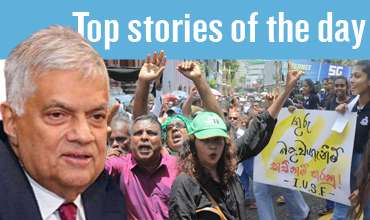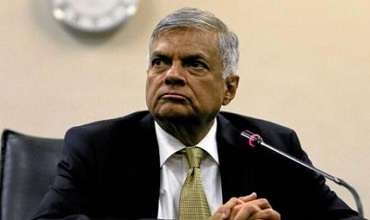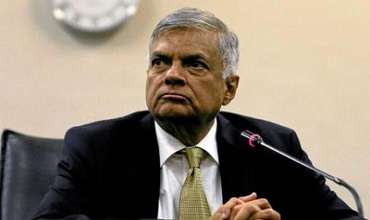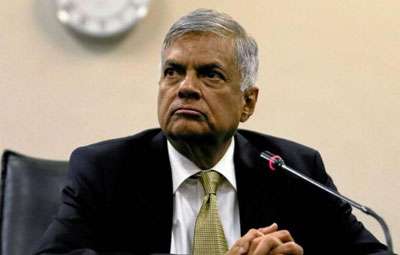Hambantota port SOT Vs Chinese deal
The Supply, Operate and Transfer (SOT) contract for the Hambantota Port that the Government recently canceled would have given the Sri Lanka Ports Authority (SLPA) a 35-percent stake in joint venture with the Chinese in addition to substantial income from operational royalties and rental for the lease of land.
Under the deal, a company set up by SLPA in partnership with two Chinese firms was to have brought in equipment and operated container berths and yards in Hambantota Port Phase II for a period of 35 years. One terminal was to have been run by SLPA. But after annulling that arrangement last month, the Government consented to sign over an 80 percent stake in
Magampura Mahinda Rajapaksa Port to a single Chinese company for 99 years. The SLPA will now hold 20 percent equity in the joint venture to be set up with China Merchant Port Holdings Company Ltd. CMPort will pay a transaction value of US$ 1.4 billion to the Government and will consider a request from SLPA for royalties only when port utilisation reaches “a mutually-agreed level of performance”. The arrangement will cover the entire port and its services.
Thus, the joint venture will acquire or lease (as the case may be) all operational assets and common user facilities including container terminals, multi-purpose terminals and oil terminals with fuel storage and supply facilities, the 45-hectare manmade island, sea channel, breakwater, access road, turning basis, navigation, cofferdam and common user terminals. The final agreement is still being ironed out.
The Government’s volte face has resulted in the reversal of a string of recent developments. The SOT negotiated by the previous administration was to have been implemented by a partnership between China Harbour Engineering Company Ltd (CHECH), China Merchant Holdings International Ltd (CMHI) and SLPA. The target had been US$ 390 million in foreign direct investment. Phase II had cost an estimated US$ 808 to build, with China Exim Bank meeting the entire contract value.
“There was a great deal of work done in 2015 to continue the development of Hambantota Port,” a senior official said, on condition of anonymity. “If this work had continued, the port would have developed gradually, steadily and strategically to become a national asset which is what it deserves to be.”
“There could have been joint venture or public-private partnership (PPP) on shorter terms of 35 years, without having to sell it because 99 years lease is almost that,” he continued. “This would have generated sufficient revenue to service the loans.”
While Phase II had provided additional container terminals and yards, Phase I had seen the construction of breakwaters, general purpose berth, service berth, oil berths, entrance channel, roads, yards and buildings by CHEC and Sino Hydro Corporation Ltd. It was initially estimated to cost US$ 361 million but an additional loan of US$ 147 million was obtained from China Exim Bank to meet price escalations and equipment costs.
SLPA started vehicle transshipment commercially in 2012. Vehicle handling capacity was doubled during the first half of 2015 and Cabinet approval was obtained to call for expressions of interest (EOI) for a joint venture with a major Ro-Ro operator to make Hambantota a major transshipment hub.
There had also been positive response from the investors keen to set up industries in Hambantota Port Industrial Zone, the official said. From an earlier request for proposals (RFP), seven parties had been selected with Cabinet approvals with investments worth US$ 670 million. As demand was high, a second RFP was called, resulting in ten bidders submitting proposals. By June 2015, Cabinet consent had been granted for several of them.
Ace Distriparks-Aitken Spence of Sri Lanka had bid to set up a warehousing facility; Pyramid Wilmar of Sri Lanka for sugar refining; and Gunvor Group of Singapore for liquefied natural gas (LNG) transshipment and distribution. Also, JKH and Fortrec, a Sri Lankan and Singapore joint venture, bid for a petrochemical tank terminal; Lucky Cement of Pakistan for cement manufacturing; and Hayleys Advantis and NYK of Sri Lanka for a roll on-roll off terminal. There had also been plans for tourism-related investments on the artificial island.
Separately, Hambantota Port has a bunkering facility and tank farm constructed by China Huanqiu Contracting and Engineering Construction (HQCEC). It was first estimated to cost US$ 76 million (85 percent loan from China Exim Bank) but a further loan of US$ 21 million was obtained from Bank of Ceylon in 2013 for additional work.
Bunkering operations started in June 2014 and yet another loan of US$ 20 million was taken from a private bank to buy fuel. The operation lost money from the start. In April 2015, Cabinet gave the go-ahead to call EOIs and a technical evaluation committee was appointed.
In August 2016, bids were submitted by Ceylon Petroleum Corporation (CPC) and Ceylon Petroleum Storage Terminals Ltd (CPSTL) as well as Adani Bunkering and the John Keels Holdings-World Fuel Services joint venture for bunkering at Hambantota port.
Cabinet approval had also been granted for a feasibility study as two global companies had shown interest in building and operating a dry dock and a floating dock.
-
Still No Comments Posted.















Leave Comments